Next time you take a walk around the streets of Melbourne CBD, take a look down at the manhole covers beneath your feet: there is a world of defunct names to explore.
The oldest one belongs to the Melbourne Hydraulic Service Power Company. The company was established in 1887 by George Swinburne (namesake of Swinburne University) to supply high pressure water to buildings around the CBD to operate hydraulic lifts, and enabled the construction of Melbourne’s first multi-storey buildings.
The legislation that enabled the construction of the high pressure pipe network also allowed the Melbourne City Council to take over the system at a future date, which they did in 1925. Renamed the Hydraulic Service Power Department, in later years electric power took over the task of powering lifts, but the hydraulic system remained operating until 1967.
Another public utility provider was the Melbourne and Metropolitan Board of Works (MMBW), established by the state government in 1891 to manage Melbourne water supply and sewage systems. In the following decades their responsibilities grew to cover more of the city, the Board being given town planning responsibilities in 1949, and the power to construct and maintain metropolitan highways and bridges in 1956.
Infighting between the MMBW and local government saw the powers of the Board slowly reduced, when road responsibilities were passed to the Country Roads Board in 1974, the town planning responsibilities were passed to the Ministry for Planning and Environment in 1985. The end came in 1991 when the Board was merged with a number of smaller urban water authorities to form Melbourne Water.
Next up is the Melbourne City Council Electrical Supply Department (MCCESD), which was a Municipal Electricity Undertaking established in 1897 to supply electricity to the City of Melbourne, generated at a power station located on the corner of Spencer and Lonsdale Streets.
With the establishment of the State Electricity Commission of Victoria in 1921, the role of the MCCESD declined into a distributor and retailer of electricity to customers inside the council area, but took until the 1994 reforms of the Victoria electricity industry for the Department to disappear.
Also related to electricity was the Melbourne and Metropolitan Tramways Board, which was established by the State Government in 1919 to take over the existing private and council operated tramways in Melbourne. As well as expanding the network into the expanding suburbs, the MMTB was also responsible for the conversion of Melbourne’s cable tramways network to electric traction.
It took the passing of the Transport Act 1983 to dissolve the MMTB, when it was merged with the suburban rail operations of the Victorian Railways to form the Metropolitan Transit Authority, which was tasked with operating the public transport network of Melbourne.
A second reorganisation of Melbourne’s trams occurred 1989 when country and metropolitan operations were merged into the Public Transport Corporation, only to be again split up in 1999 as part of the privatisation of public transport by the Kennett Government.
Continuing on the privatisation theme, we find the Gas and Fuel Corporation of Victoria, the former monopoly supplier of household gas in Victoria. It was established by the state government in 1951 to take over a number of private town gas companies in Victoria, later developing a brown coal fuelled gasification plant at Morwell, only to have to made redundant after the discovery of natural gas in Bass Strait in 1965.
In 1997 the Gas and Fuel Corporation under the Kennett Government saw the same fate as the State Electricity Commission of Victoria: split up into retail, distribution and transmission companies that were sold off, with the remaining regulatory responsibilities being placed under a State Government-owned entity.
Making a change from state level entities, we now jump to the federal government with the Postmaster-General’s Department. Created at Federation in 1901 to control all postal (and later, telecommunications) services within Australia, in 1975 it was disaggregated, with the telephone side becoming known as Telecom Australia.
Telecom Australia was renamed to Telstra in 1995, and then privatised by the Federal Government in three share issues made in 1997, 1999 and 2006.
The final and possibly least understood manhole cover is this one from the Road Traffic Authority. When most people hear ‘RTA’ they think of the New South Wales road authority that manages the bumpy concrete monstrosities they call ‘motorways’ on the north side of the Murray River, but for almost a decade, Victoria also had a government entity by that name. Our version was established under the Transport Act 1983, which if you were paying attention earlier, also shook up the public transport operators in the state of Victoria.
Tasked with accident prevention and road safety, as well as transport regulation, driver licensing and the registration of motor vehicles, the Victorian version of the RTA only existed for six years – it was merged with the Road Construction Authority in 1989 to form the Roads Corporation, which still exists today under the VicRoads trading name.
Next time you are out, how many of these manhole covers can you spot?
Further reading
- A slightly less intense look at the names of Melbourne’s manhole covers
- A good read about the Melbourne Hydraulic Service Power Company
Sources
- Melbourne Hydraulic Service Power Company history at the White Hat Guide to Melbourne
- Melbourne and Metropolitan Board of Works history at The Encyclopedia of Melbourne Online
- Melbourne City Council Electrical Supply Department in an earlier post of mine
- Melbourne and Metropolitan Tramways Board history at Wikipedia
- Gas and Fuel Corporation of Victoria history at Wikipedia
- Postmaster-General’s Department history at Wikipedia
- Road Traffic Authority overview at the Public Records Office of Victoria

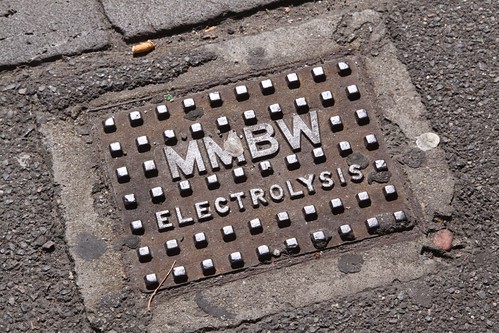
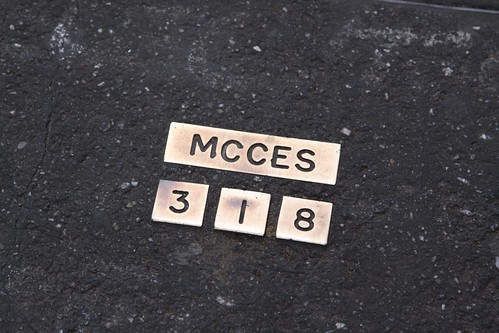

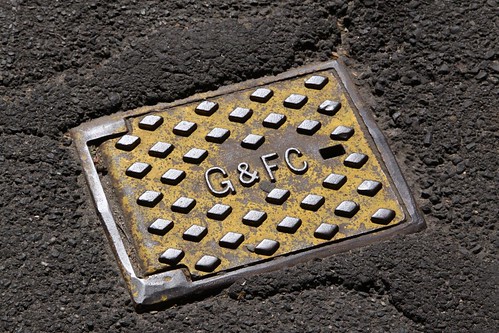

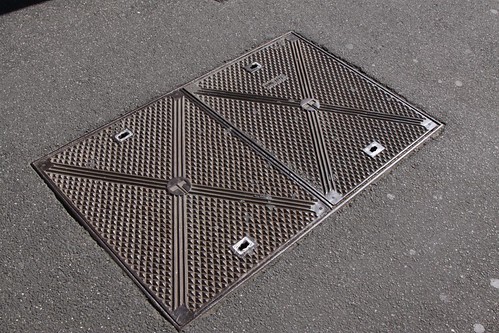
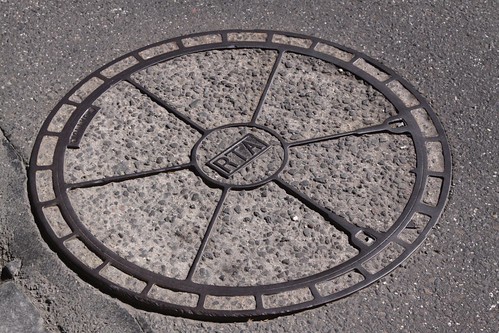

FYI, the RTA in NSW is defunct now too.
I forgot about that one – in 2011 it was merged with NSW Maritime to form ‘Roads and Maritime Services’ agency:
http://smh.drive.com.au/rta-to-be-killed-off-20110715-1hh3r.html
Manhole covers do tell a history – and it is interesting the sharing of the PMG/Telecom cover styles with other bodies. The two lid MMTB cover was actually the form of the PMG main cable lid before the all-metal ones which you have two examples.
The RTA lid replaced a concrete-only one which had ‘CRB TRAFFIC ENG’ on it and was replaced by an RCA then VicRoads one.
The rebranding of manhole covers is an interesting one: because they aren’t as visible as signage on buildings and vehicles, it seems that the old names only disappear when the manhole covers that bear them are broken and need replacement.
Thankfully there doesn’t seem to be any companies out there stupid enough to replace them just for branding purposes!
An interesting example was in the mid 90’s when the Foxtel cable was being threaded through the old PMG/Telecom/Telstra ducts and new pits needed to be installed particularly on the local cable (i.e. the smaller concrete lids) in some places. A mixture of leftover Telecom and newer Telecom/Telstra logo lids can be seen from this work. Of course some of their later installations involved overhead lines, double cabling under the Optus line.
Are they really called manhole covers when some are quite small access points to underground services?
Also a better challenge is to find covers not listed in this article, naturally there are many current ones like Optus, Digital River, etc… but there are other defunct ones around too.
You’re correct about some being only hatches that cover buried shutoff cocks: the Hydraulic Service Power Department, MMBW and G&FC ‘manhole covers’ both fall into this category.
Pit covers is a term I’ve seen referring to the PMG/Telecom/Telstra types.
And telcos call their underground spaces “pits” for small ones, and “cable vaults” for the bigger ones you can climb into.
New Zealand and Japan often use very decorative covers. Ours are quite plain. There is still a number of MMBW covers around in Melbourne, along with some private plumbing firm covers in public areas.
You are right about Japan and their decorative covers – there is quite the collection of photos on Flickr: http://www.flickr.com/groups/japanese_manhole_covers/pool/
As for the Melbourne and Metropolitan Board of Works manhole covers, they are the are one type I forgot to include – I’ve gone back and added a photo which featured in a previous blog post: http://wongm.com/2011/06/victorian-electrolysis-committee/
While certainly not old, today I noticed a new cover in a footpath near a tram electric substation I had never seen before, Vic Track.
Over the past few months I’ve been doing the rounds of Melbourne’s tramway substations:
https://railgallery.wongm.com/tramway-traction-substations
I believe the VicTrack pits are for the fibre optic cables they van installed, they are used for the communication links back to the main control room for the tramway power supply.
Ok. It was outside substation MA.
Wow! Very inspiring. I’ll be putting my photography to better use now.
Where would one find, or go about finding dome used man hole covers? Thinking about an art project and would like to use them for.
That hydraulic cover is from the 20s, but there’s two George Parade in the city from the original 1888 installation that just says “hydraulic service power co”.
Hoping to find the locations of covers marked SCOA – Steel Company of Australia
Unfortunately I don’t, but the SCOA name rings a bell – they made wheels for steam locomotives!
https://en.wikipedia.org/wiki/SCOA-P_wheel
Thanks Marcus, that’s in the article (and I have images) but it’s a manhole cover I am after!
Hello
I am looking for
Engineers Technical Standard,
Photos &or
Drawings
of old heavy duty pre cast concrete ( 1974 & prior ) Telephone ” Pits ” ( possible including Manhole & Cover ? ) that were installed in Adelaide 1974 in a private Unit ( 1 of Group of 6 BUILD ) Backyard &or on the Boundary of an adjoining ( another ) Group ( of 6 ) Units LATER BUILD 1978 – 1979 ;
possibly installed ( or articulated with ? ) at the same time as SA Water gravity Sewerage System ;
my contact details are [email protected] &or 04 2888 2844 SMS txt 7 days as I am 80 % DEAF ;
Many thanks & sincere regards
Cheers